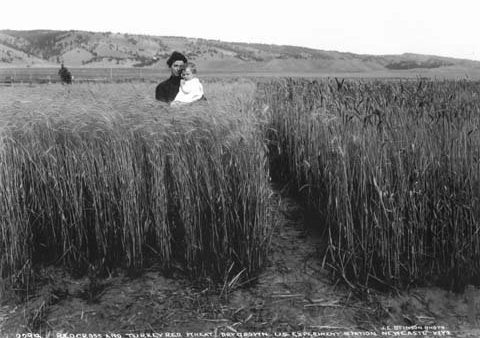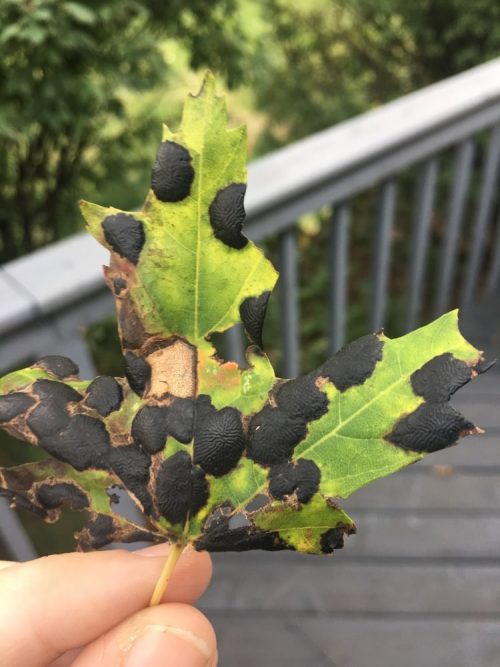In the American Midwest, where the Weaving Influence headquarters are located, there is a special variety of wheat that grows through the winter. Decoratively, it’s used just about everywhere. Clumped in yards and golf courses, scattered along highways. (It also accounts for 70-80% of total U.S. wheat production.) And honestly, I never noticed it much until I became a homeowner and started to care about things like perennials and low maintenance shrubbery.
Now that it has been hovering just around 0 degrees all week, I really, really like that there is a bit of winter wheat waving cheerily in my yard. It makes me feel like maybe I am strong and sturdy like my pioneer ancestors.
Of course, the thing that’s so cheeky about winter wheat is that it grows when it’s not supposed to. It grows at the “wrong” time. It grows when the calendar is telling those of us in the northern hemisphere to stay inside with a cup of cocoa, reflecting on the past year and planning for the next one. When most plants have wisely chosen to retreat from the cold, and take pause and rest from growing, there goes that winter wheat again.
- What if growth isn’t happening when you wanted it to?
- What if growth is happening when something should be—or appears to be—dead, dormant, or sleeping?
Both scenarios can be awfully lonely.
 This picture (courtesy of Wyoming state archives) also really captured my imagination this year, just before we made a cross country move 700 miles west: a 1908 photo of a woman and child standing in a field of winter wheat near Newcastle, Wyoming.
This picture (courtesy of Wyoming state archives) also really captured my imagination this year, just before we made a cross country move 700 miles west: a 1908 photo of a woman and child standing in a field of winter wheat near Newcastle, Wyoming.
The message is pretty clear here too: young pioneer, super alone. It’s lonely, growing things.
I did a little more digging on her. It turns out that a major oil gusher was discovered near this spot just a few years later. Tons of people poured in searching for a profit. This woman was standing, figuratively if not literally, on more wealth than she could imagine. Her life was about to become anything but lonely.
- Dead things, or even growing things, may disguise other imminent growth.
 Of course, the great thing about my (decorative) winter wheat is that . . . you don’t really need to do anything to it. Along with so many other plants, it repeats the life cycle on its own. We even learned this fall that in some yards, you don’t need to rake! You can just run the mower over the leaves to mulch them up, which makes a lovely winter coat for tree roots.
Of course, the great thing about my (decorative) winter wheat is that . . . you don’t really need to do anything to it. Along with so many other plants, it repeats the life cycle on its own. We even learned this fall that in some yards, you don’t need to rake! You can just run the mower over the leaves to mulch them up, which makes a lovely winter coat for tree roots.
This is not true, however, of one particular tree in our yard, which is full of nasty black fungus. The solution for this is to burn every last leaf from that tree, several years in a row, so that none of them make it back into the soil. The exact opposite of my newfound, lazy mulching method.
I love the irony of this.
- Am I killing myself over accomplishing unnecessary tasks?
- Where is my fungus? And am I willing to do as much leaf burning as it takes to get rid of it?
On behalf of Weaving Influence, wishing you much winter wheat and no trace of fungus in this brand New Year.

Laura Finch, a native of Wheaton, IL, has eight years of experience in politics and news, including time spent working as a press aide to a U.S. congressman and a stint as a producer for a morning cable news show. She holds an undergraduate degree in psychology from Taylor University in Indiana, a graduate degree in digital journalism from American University in Washington, D.C., and is an alumna of Indiana’s Lugar Series. She has also been published in one book, “The Zambia Project,” about a major student AIDS project completed through WorldVision. In her spare time Laura loves to run along the Potomac and discover new D.C. restaurants with her husband, Andrew.

